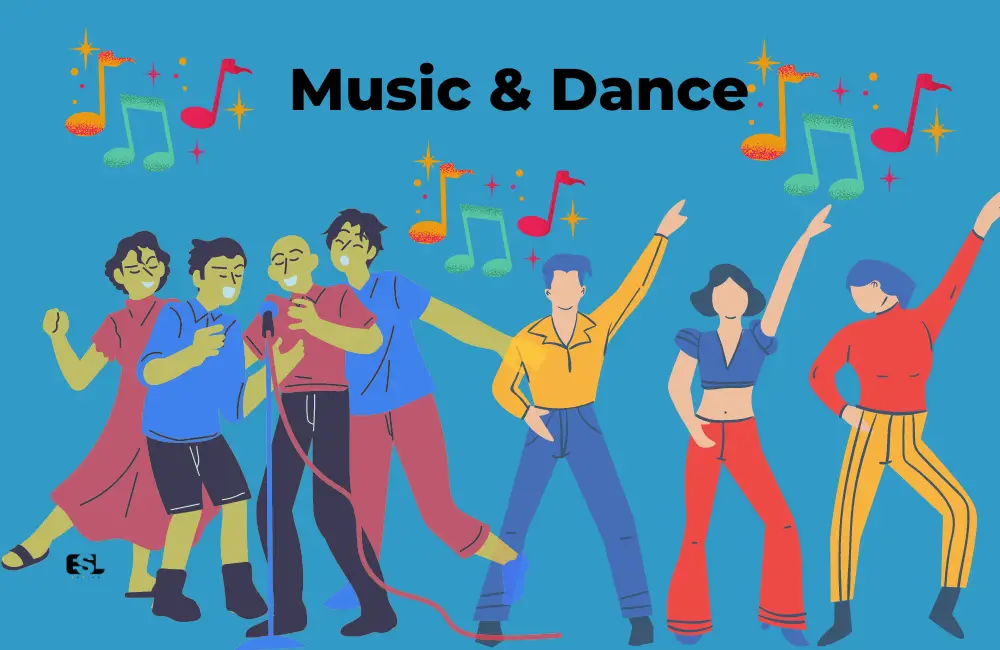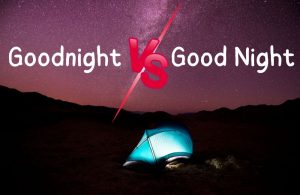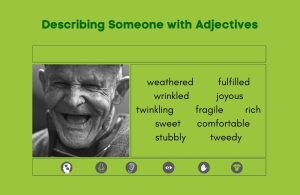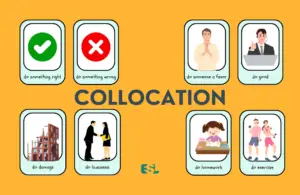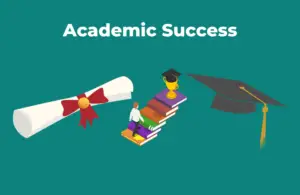Understanding and accurately describing music and dance can often be challenging, particularly when you lack the appropriate vocabulary. This guide aims to equip music lovers, dancers, and anyone with an interest in the arts with the necessary terminology to express themselves clearly and confidently.
It delves into keywords and phrases used in the realm of music and dance, discussing rhythm, melody, dance types, and much more. Let’s take a melodious journey through the language of music and dance.
Table of Contents
- 1. Musical Instruments
- 2. Rhythm and Tempo
- 3. Melody and Harmony
- 4. Dance Styles
- 5. Music Genres
- 6. Music Production and Performance
- 7. Dance Techniques and Movements
- Sample Conversation: Using Vocabulary Related to Music & Dance
- Conclusion
- FAQ: Vocabulary Related to Music & Dance
1. Musical Instruments
Music would not exist without the instruments that produce it. Here are some words to help describe and talk about a variety of musical instruments.
| Word/Phrase | Meaning/Usage | Example Sentences |
|---|---|---|
| String instruments | Instruments that produce sound by vibrating strings | “The violin and cello are examples of string instruments.” |
| Percussion instruments | Instruments that sound when struck or shaken | “Drums and maracas are percussion instruments.” |
| Woodwind instruments | Instruments in which sound is produced by the vibration of reeds in the mouthpiece or by the passing of air across a mouth hole | “The flute and saxophone are woodwind instruments.” |
| Brass instruments | Wind instruments made of brass, typically producing a harsh or triumphant sound | “The trumpet and trombone are brass instruments.” |
| Electronic instruments | Instruments that produce sound using electronic circuits or digital means | “Synthesizers and electric guitars are electronic instruments.” |
| Acoustic instruments | Instruments that amplify sound naturally without electronic enhancement | “The acoustic guitar and violin are acoustic instruments.” |
| Keyboard instruments | Instruments that have a keyboard as the primary method of sound production | “The piano and organ are keyboard instruments.” |
| Wind instruments | Instruments where sound is produced by blowing air into it | “The flute and clarinet are wind instruments.” |
| Plucked string instruments | Instruments where sound is produced by plucking the strings | “The harp and guitar are plucked string instruments.” |
| Bowed string instruments | Instruments where sound is produced by a bow rubbing against its strings | “The violin and cello are bowed string instruments.” |
If you are searching for an effective English language vocabulary builder, try Word Power Made Easy: The Complete Handbook for Building a Superior Vocabulary (Amazon Link). This time-tested classic has helped millions achieve mastery of English and improve their communication skills in business, the classroom, and in life.
2. Rhythm and Tempo
Rhythm and tempo form the pulse and pace of music. These terms will help you understand and describe these musical aspects better.
| Word/Phrase | Meaning/Usage | Example Sentences |
|---|---|---|
| Beat | The basic unit of time in music | “The beat of the song is very catchy.” |
| Rhythm | A strong, regular, repeated pattern of movement or sound | “The rhythm of the song makes me want to dance.” |
| Tempo | The speed at which a piece of music is played | “The tempo of the song is very fast.” |
| Syncopation | A disturbance or interruption of the regular flow of rhythm | “The syncopation in jazz music gives it a unique sound.” |
| Measure | A unit of music that contains a number of beats | “The melody changes every four measures.” |
| Metronome | A device used by musicians that marks time at a selected rate by giving a regular tick | “He practiced the piano with a metronome to keep time.” |
| Cadence | A sequence of chords that brings an end to a phrase, either in the middle or the end of a composition | “The cadence of the song gave a feeling of resolution.” |
| Backbeat | Emphasis on the second and fourth beats of a 4-beat measure, typical in rock and roll music | “The backbeat is strong in this song, it gives it a great groove.” |
| Downbeat | The first beat of a measure, typically the strongest | “The conductor’s baton was raised before the downbeat.” |
| Upbeat | The last beat of a measure, a weaker beat | “She started singing on the upbeat.” |
3. Melody and Harmony
Melody and harmony give music its richness and depth. Here are words to describe these components.
| Word/Phrase | Meaning/Usage | Example Sentences |
|---|---|---|
| Melody | A sequence of single notes that make up a musical phrase or idea | “The melody of the song is very memorable.” |
| Harmony | The combination of simultaneously sounded musical notes to produce chords | “The harmony in the chorus is beautiful.” |
| Key | The group of pitches, or scale, that forms the basis of a music composition | “The song is in the key of C major.” |
| Octave | A series of eight notes occupying the interval between two notes, one having twice or half the frequency of vibration of the other | “She has an impressive vocal range of three octaves.” |
| Scale | A series of musical notes ordered by pitch or frequency | “She was practicing the G major scale on the piano.” |
| Chord | Three or more notes that are played at the same time | “The guitarist played a G major chord.” |
| Interval | The distance in pitch between two notes | “The interval between the first two notes in the melody is a perfect fifth.” |
| Modulation | Changing the key within a piece of music | “The modulation to a higher key in the final chorus creates a powerful effect.” |
| Pitch | The perceived frequency of a note | “She has perfect pitch and can identify any note by ear.” |
| Tune | A series of musical notes that are sung or played in a definite pattern | “He whistled a happy tune.” |
4. Dance Styles
Dance complements the music, and knowing how to describe various dance styles enriches your vocabulary. Here are some words related to different dance styles.
| Word/Phrase | Meaning/Usage | Example Sentences |
|---|---|---|
| Ballet | A type of performance dance that originated during the Italian Renaissance | “She attended ballet classes at the local dance school.” |
| Salsa | A popular form of social dance that originated in the Caribbean | “They took salsa lessons together as a fun way to exercise.” |
| Hip Hop | A dance style, usually danced to hip hop music, that evolved from the hip hop culture | “He is proficient in hip hop dance.” |
| Tango | A partner dance that originated in the 1880s along the River Plate, the natural border between Argentina and Uruguay | “They performed a passionate tango at the competition.” |
| Jazz Dance | A performance dance technique and style that first emerged in the United States in the early twentieth century | “Jazz dance is known for its high energy and unique style.” |
| Waltz | A dance performed in triple time, typically by a couple | “The waltz is a classic dance often performed at weddings.” |
| Contemporary | A genre of dance performance that developed during the mid-twentieth century | “She excels in contemporary dance.” |
| Breakdance | A style of street dance that originated among African American and Puerto Rican youths in New York City during the early 1970s | “Breakdance includes moves like the headspin and windmill.” |
| Flamenco | A genre of Spanish music, song, and dance from Andalusia, in southern Spain | “Flamenco is known for its emotional intensity and rhythmic footwork.” |
| Tap Dance | A type of dance characterized by using the sounds of tap shoes striking the floor as a form of percussion | “The tap dance routine was very entertaining with its complex rhythms.” |
5. Music Genres
Different music genres carry distinct moods, themes, and aesthetics. Understanding these will enhance your musical vocabulary.
| Word/Phrase | Meaning/Usage | Example Sentences |
|---|---|---|
| Pop | A genre of popular music that originated in its modern form during the mid-1950s in the United States and the United Kingdom | “Her favorite music genre is pop, and she loves Taylor Swift.” |
| Rock | A genre that originated as “rock and roll” in the United States in the 1950s and developed into a range of different styles in the 1960s and later | “The Beatles were a huge influence on rock music.” |
| Jazz | A music genre that originated in the African-American communities of New Orleans, United States, in the late 19th and early 20th centuries | “Miles Davis was a pioneer of jazz music.” |
| Blues | A music genre and musical form which was originated in the Deep South of the United States around the 1870s by African-Americans | “B.B. King is a renowned blues musician.” |
| Hip Hop | A genre of popular music developed in the United States by inner-city African Americans and Latino Americans in the Bronx borough of New York City in the 1970s | “Kendrick Lamar is a prominent hip hop artist.” |
| Classical | Art music produced or rooted in the traditions of Western culture, generally considered to have begun in Europe after the fall of the Western Roman Empire in the AD 476-500 | “Beethoven and Mozart were famous classical composers.” |
| Electronic | Music that employs electronic musical instruments, digital instruments, or circuitry-based music technology | “Daft Punk is known for their electronic music.” |
| Reggae | A music genre that originated in Jamaica in the late 1960s | “Bob Marley is a legend in reggae music.” |
| Country | A genre of popular music that originated with blues, old-time music, and various types of American folk music | “Dolly Parton is a famous country singer.” |
| Soul | A genre of music that combines elements of African-American gospel music, rhythm and blues, and jazz | “Aretha Franklin was known as the ‘Queen of Soul’.” |
6. Music Production and Performance
These words are about the process of creating and performing music.
| Word/Phrase | Meaning/Usage | Example Sentences |
|---|---|---|
| Production | The process of creating a song or album, often involving a producer overseeing recording and sound design | “The production of the album took six months.” |
| Mixing | The process of adjusting and combining individual sound tracks into a final product | “The mixing of the song balanced the vocals and the instruments well.” |
| Mastering | The final step in the process of producing a song or album, where the sound is refined and prepared for distribution | “After mastering, the album was ready to be released.” |
| Live performance | Performing music in front of an audience, often in a concert or festival setting | “There’s something special about live performances that can’t be replicated.” |
| Session musician | A professional musician who is hired to perform on recordings but is not a member of the band or artist’s regular lineup | “The session musician added a beautiful violin part to the song.” |
| Soundcheck | The process by which the sound engineer checks and adjusts the sound of the instruments and microphones before a performance | “They conducted a soundcheck before the concert to ensure the sound quality.” |
| Encore | An additional performance at the end of a concert, done in response to an audience’s continued applause | “The band played two encores due to the enthusiastic crowd.” |
| Setlist | A list of songs that a band or artist plans to perform during a specific concert | “The setlist included all of their greatest hits.” |
| Sound engineer | A professional who works on the technical aspects of sound during the production and recording of music | “The sound engineer ensured the best sound quality for the album.” |
| Arrangement | The way the parts of a piece of music are organized | “The arrangement of the song included a saxophone solo.” |
7. Dance Techniques and Movements
These terms relate to specific movements and techniques used in dance.
| Word/Phrase | Meaning/Usage | Example Sentences |
|---|---|---|
| Pirouette | A type of dance turn on one foot | “The ballerina executed a flawless pirouette.” |
| Jete | A leap in ballet from one foot to the other | “He performed a grand jete across the stage.” |
| Plie | A ballet movement in which the knees are bent while the back is held straight | “She warmed up with a series of plies.” |
| Chaîné turns | A series of rapid turns on the points or demi-pointes in ballet | “The dancer moved across the stage using chaîné turns.” |
| Arabesque | A pose in ballet in which the dancer stands on one leg and extends the other behind the body | “The dancer held a beautiful arabesque pose.” |
| Spotting | A technique used during turns to prevent dizziness | “Spotting is crucial when executing multiple turns in a row.” |
| Tap steps | Specific movements in tap dance that create rhythmic sounds | “The routine included a series of complex tap steps.” |
| Breakdance moves | Specific movements in breakdance, often involving acrobatics, dance, and gymnastics | “The breakdance routine included impressive moves like windmills and headspins.” |
| Salsa steps | Specific movements in salsa dance, characterized by quick footwork and rotating partners | “The salsa steps were quick and intricate, requiring precise timing.” |
| Flamenco techniques | Specific techniques in flamenco dance, including footwork, clapping, and body movements | “The flamenco dancer used traditional flamenco techniques, creating a powerful performance.” |
To elevate your vocabulary in just 30 days, I recommend to my students an informative, fun, and accessible guide to utilizing powerful language. Millions of individuals have enhanced their academics, job skills, and confidence by dedicating just fifteen minutes daily to the exercises and tests of 30 Days to a More Powerful Vocabulary (Amazon Link), a top-selling. It offers step-by-step methods to bolster language prowess, discover compelling words, and daily vocabulary enhancement with pronunciation guidance.
Sample Conversation: Using Vocabulary Related to Music & Dance
Situation: At a local arts festival, Oliver and Elena chat about their passion for music and dance over a cup of coffee.
Oliver: Elena, I’ve been diving into classical “compositions” lately. The intricate “melodies” and complex “harmonies” of composers like Beethoven just captivate me.
Elena: I can relate, Oliver. The “symphonies” from that era have a timeless appeal. The way they build “crescendos” and play with “tempo” is just breathtaking.
Oliver: Absolutely. And speaking of tempo, I’ve always been curious about dance. How do dancers adapt to varying “rhythms” and “beats”?
Elena: Great question! In dance, especially in styles like “ballet” or “salsa,” the dancer’s movements often echo the music’s “dynamics.” For example, a “staccato” rhythm might translate to sharp, quick movements, while a “legato” passage inspires fluid, graceful motion.
Oliver: Fascinating! I’ve also noticed how some dances involve “synchronization,” especially in group performances.
Elena: Yes, “choreography” often requires dancers to move in perfect harmony, ensuring each “step” and “gesture” aligns with the music and with other dancers. It’s a beautiful blend of discipline and artistry.
Conclusion
Understanding music and dance vocabulary opens up new worlds of appreciation, conversation, and creativity. Whether you’re a music enthusiast, a dance lover, or just someone looking to expand your linguistic repertoire, these terms offer an engaging way to describe rhythms, melodies, and movements.
So, next time you find yourself tapping your feet to a catchy beat or swaying to a soothing melody, you’ll have a wealth of vocabulary at your disposal to describe your experience. Embrace the language of music and dance, and let it amplify your understanding and appreciation of these beautiful art forms.
FAQ: Vocabulary Related to Music & Dance
1. What is a “composition” in music?
A “composition” refers to a piece of music that has been created and typically written down. It encompasses the melody, harmony, rhythm, and structure of the piece.
2. How do “melodies” differ from “harmonies”?
“Melodies” are sequences of musical notes that are perceived as a single entity, while “harmonies” are combinations of simultaneously sounded musical notes that produce chords and chord progressions.
3. What is a “symphony”?
A “symphony” is an extended musical composition, typically for an orchestra. It often consists of several movements that vary in tempo and mood.
4. What does “crescendo” mean in music?
A “crescendo” refers to a gradual increase in volume or intensity in a piece of music.
5. How is “tempo” significant in a musical piece?
“Tempo” dictates the speed or pace at which a piece of music is played. It sets the mood and can evoke various emotional responses from the listener.
6. How do “rhythms” and “beats” play a role in dance?
“Rhythms” refer to patterns in time, while “beats” are the basic units of time in music. In dance, these elements guide the dancer’s movements, ensuring they align with the music’s pulse.
7. What does “staccato” mean in music and dance?
“Staccato” denotes short, distinct notes or movements, giving a detached or disconnected feeling.
8. How does “legato” contrast with “staccato”?
While “staccato” represents short, detached notes or movements, “legato” implies smooth, flowing sequences in music or dance without breaks.
9. What is “choreography” in dance?
“Choreography” refers to the art of creating and arranging dances or dance sequences, often set to music.
10. How does “synchronization” enhance group dance performances?
“Synchronization” ensures that all dancers move in harmony with each other, creating a unified visual and artistic effect, enhancing the overall performance.

